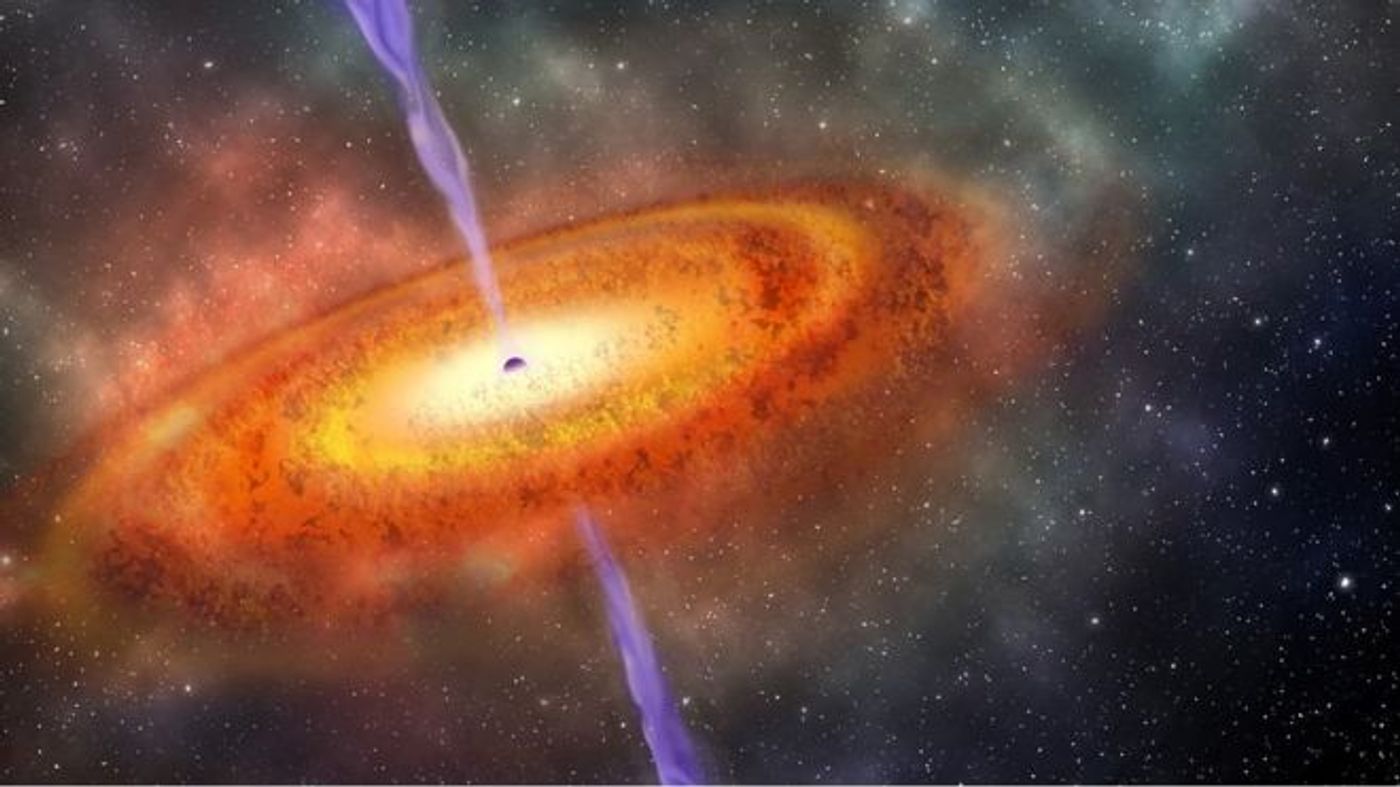Astronomers Discover Most Distant Supermassive Black Hole to Date
After sifting through heaps of astronomical data gathered during three separate large area surveys, astronomers believe they’ve discovered the most distant supermassive black hole ever known to science.
Image Credit: Robin Dienel
Dubbed J1342+0928, the so-called record-breaker resides about 13.1 billion light-years away from Earth and is 800 million times more massive than the Sun. Furthermore, an accretion disk of super-heated matter surrounds the black hole, causing it to exhibit quasar-like characteristics. The complete findings have been published in the journal Nature this week.
Follow-up observations made with the Gemini Observatory in Hawaii enabled astronomers to measure infrared light signatures, particularly those coming from Magnesium lines. While J1342+0928's scale-tipping redshift of 7.54 undoubtedly made it challenging to discern the quasar's Magnesium line data, astronomers say it helped in figuring its mass.
Related: We will soon get to see the first "real" image of a black hole
At 13.1 billion light years away, we’re seeing J1342+0928's light as it would have appeared just 690 million years after the Big Bang. For reference, current estimates imply that the Big Bang took place roughly 13.8 billion years ago.
690 million years is only a blink of an eye in astronomical terms despite how long it seems to us. Astronomers still aren’t sure how J1342+0928 accumulated so much mass so soon after the Big Bang; it goes against everything we thought we knew about the universe, and it’s raising more questions than it answers.
"Gathering all this mass in under 690 million years is an enormous challenge for theories of supermassive black hole growth," explained study co-author Eduardo Bañados from the Carnegie Institution for Science.
"Despite extensive searches, it took more than half a decade to catch a glimpse of something this far back in the history of the Universe. This finding shows that a process obviously existed in the early Universe to make this monster," he continued.
Related: Astronomers spot two previously-invisible supermassive black holes
The discovery of such a massive object in the early universe doesn't necessarily discredit the notion that the Big Bang happened 13.8 billion years ago, but it does suggest that there may have been other mechanisms at work that we don't yet know about.
Digging deeper into this mystery could be one only way to paint a more accurate depiction of the early universe following the Big Bang. With that in mind, astronomers are likely to spend more time attempting to crack this mystery.
Source: BBC, EurekAlert









